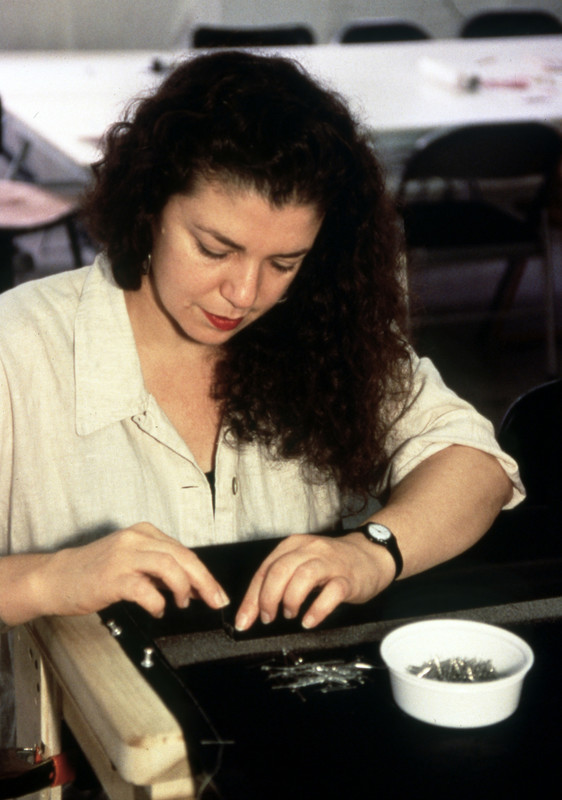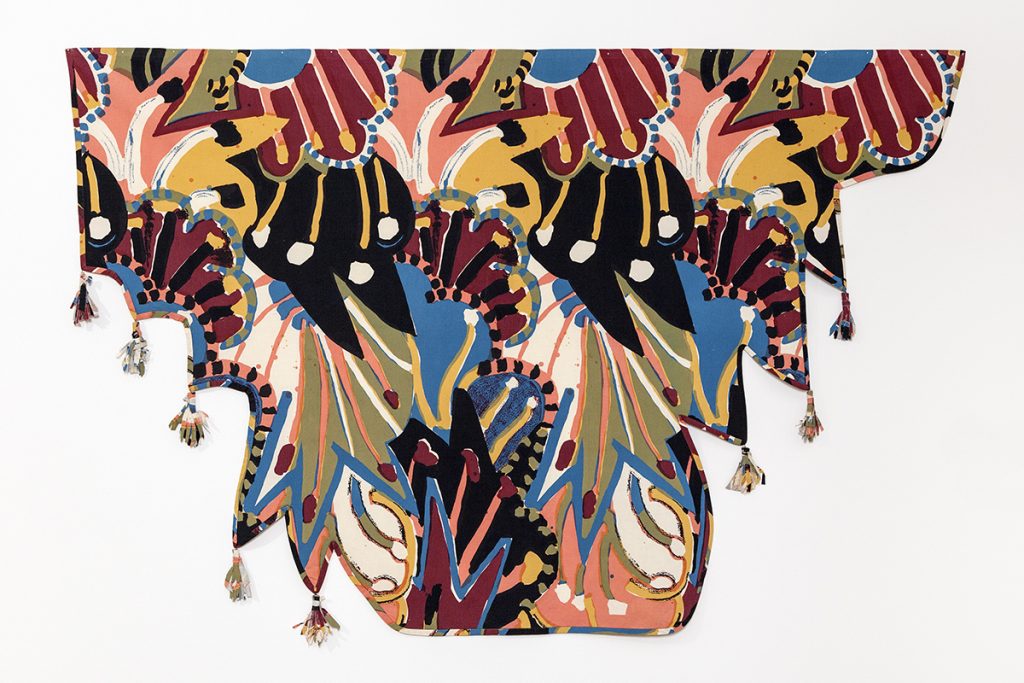Mona Hatoum started her practice in the early 1980s while enrolled at the Slade School of Fine Art in London; her early work utilized video and performance to discuss themes of displacement and exile. Moving into the 1990s, the artist began working in sculpture and installation, departing from performances that focused on her own body in favor of a formal examination of objects that confronted the body of the viewer.
In 1995, during her residency at The Fabric Workshop and Museum (then The Fabric Workshop), Hatoum explored traditions in textiles and domestic objects by challenging production techniques in carpet making. As the culmination of her collaboration with FWM, Hatoum created two sculptural carpets comprised of non-traditional materials. Pin Carpet is a 4 x 8-foot surface made out 750,000 pins that were hand pushed through needle point canvas. With the work’s medium and tactile quality not immediately clear—and at first appearing almost inviting—its hostile surface becomes apparent upon closer inspection. The second work, Entrails, is a carpet comprised of a complex maze of intestines cast in the same silicone rubber used in some breast implants. Both carpets play with contradictory impulses in the viewer, eliciting both attraction and repulsion.
After her time at FWM, Hatoum continued to create large-scale works from everyday materials that, once transformed by the artist, often elicit conflicting responses within viewers. Her work has since been exhibited widely, including the Tate Britain, London, UK; the Museum of Modern Art, New York, NY; the Arab Museum of Modern Art, Doha, Qatar; the Institute of Contemporary Arts, Boston, MA; and the Hiroshima Museum of Contemporary Art, Japan.


